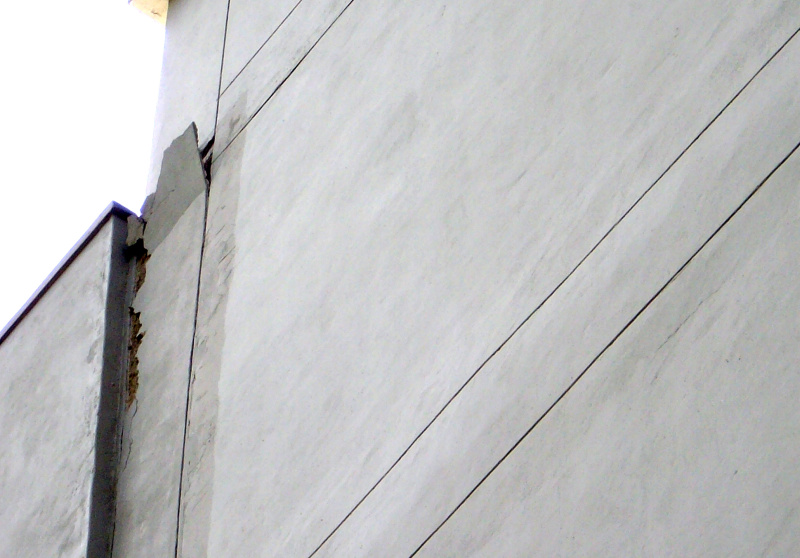For some individuals, tracking down a decent spot to live is a fantasy. We plan our homes in more ways than one, one of which is painting on plastered dividers. Plastering smooths the surfaces as well as offers a decent completion to the dividers, roofs, and different segments of the structure, and it is a significant piece of development.
It is vital to know about Wall Plaster absconds to guarantee great plaster quality. Understanding the different plaster absconds and their causes will assist you with fixing them before they deteriorate. So read on to find out more.
1. Broken Plaster
It is the most considered normal issue that you may notice. Hairline breaks, delamination breaks, and settlement breaks are instances of broken plaster. There are a ton of reasons these breaks could show up. The development of establishments, or warm development of the rooftop, could cause contracting brickwork.
2. Lopsided Plaster Surface
Unfortunate craftsmanship causes irregularities in the completing plane of the plastered surface, bringing about a lopsided plastered surface. An ineffectively done plaster work harms the feel of the completed item.
You can pull off utilizing a block hand sander in the event that the Cement Plastering is just marginally lopsided in segments. You might have to utilize an electric sander assuming the plaster is incredibly lopsided. Regardless, utilize a fine grade of sandpaper and work gradually.
Applying a skim layer of plaster to the dividers might be ideal in the event that the dividers are very lopsided. This resembles normal plastering, just you’re simply filling in the holes. This is significantly simpler than sanding, yet you’ll require a consistent hand or you’ll wind up with more work.
3. Gurgled Plastered Wall
One of the significant reasons for plaster harm is dampness and soggy conditions. This is an issue that happens when the material air pockets or grows outward in view of serious water harm. On the off chance that you don’t resolve the issue rapidly, the harm might decline, and the impacted region might foster form.
To fix, distinguish the wellspring of the break and do all that could be within reach to stop the progression of water. Start by eliminating the harmed plaster and any free particles from the divider and permitting it to dry. Apply an oil-based preliminary sealer to the perfect and dry surface prior to painting the harmed region.
4. Debonding Plasters
This deformity happens when the material strips from the divider. Now is the ideal time to begin an undeniable fix work in the event that the debonding spot spreads to a bigger region.
To reestablish, start by tenderly cleaning any grimy or sleek divider surfaces. Prior to plastering, utilize a cement slurry or a splatter run coat on the dividers. To stay away from future de-holding issues, add holding fluids towards the end.
5. Smiling in Plastering
Mortar joints that are apparent through the plaster additionally consider plastering surrenders. The distinction in pull among brickwork and mortar for the most part causes it, as well as the expulsion of mortar joints.
To keep away from this, it’s ideal to apply an undercoat or spatterdash coat prior to plastering. This strategy forestalls the sliding of delivering and plastering materials.
6. Rankling
Rankling is the arrangement of little plaster fixes that grow past the plastered surface. Ill-advised cement mortar blending and clamminess interruption in a divider causes air pockets to frame.
Subsequent to managing the dampness issue, eliminating the impacted plaster and supplanting it with a fix is a productive method for eliminating the rankle. Joint fix compound is not difficult to apply and dry, and it permits you to recreate the plaster surface with a workable fix that mixes in with the encompassing plaster, giving you the fine plaster look that old structures are known for.
7. Non-abrasiveness of the Plaster
Outrageous dampness makes the plaster mellow at explicit spots on the plastered surface. Unreasonably dainty completing coats, deliquescent salts, and the high pull of the undercoats cause non-abrasiveness.
It is essential to comprehend the sort of plaster imperfection present on your property and how much it is mediocre. Address plaster abandons like underlying breaks immediately. Different blemishes might require a clamminess evaluation; this applies to rankling, flowering, or delicate quality of the plaster, all of which risk dampness interruption into the dividers or roofs. Given the significance of wellbeing and security, these flaws require quick consideration and cure under the oversight of a group of experts before the issue declines.


